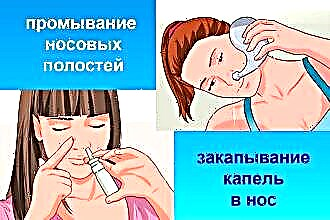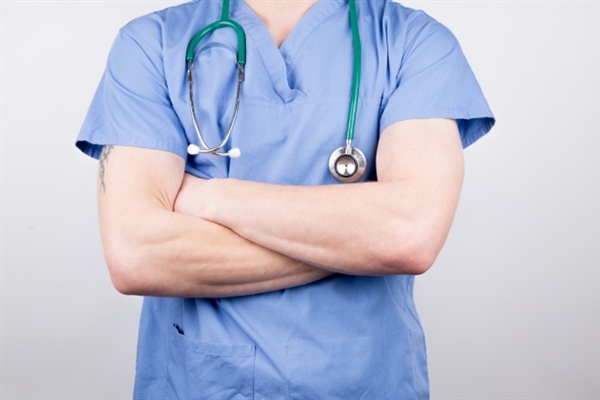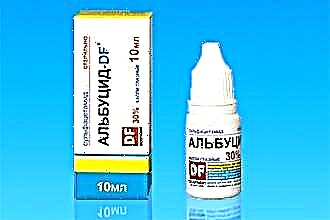A decrease in the heart rate to 60 per minute and below is called sinus bradycardia. Sometimes such a rhythm is completely safe and indicates the fitness of the heart muscle (for example, in athletes). A decrease in heart rate to 50 beats per minute and below is often accompanied by unpleasant complaints - weakness, dizziness, fatigue. Drug treatment of severe bradycardia should be started when other clinical symptoms of arrhythmia appear. The rhythm of 45 beats per minute can be dangerous, especially for elderly patients with cerebral vascular pathology, since they may lose consciousness and injury when falling.
Emergency care for bradycardia
When the heart rate slows down, there is a danger of hypoperfusion (decreased oxygen saturation) of vital organs, primarily the brain - neurons work poorly when they cannot “burn” glucose. Therefore, the help that others should provide is aimed at "moving" blood from the vessels of the extremities to the head and body.
Pre-medical measures to relieve symptoms of bradyarrhythmia:
- Put the patient on his back, place his legs on a pillow or roller made of available materials. Under the influence of the force of gravity, the blood "flows" from the raised limbs to the central organs, which need it in the first place.
- Give a person strong tea or coffee. These substances activate the sympathetic part of the autonomic system, which increases the heart rate, bringing the victim to consciousness.
- It is recommended to help the patient to do some physical exercises. The contracted muscles of the limbs will compress the peripheral vessels, redistributing blood. Adrenaline, which is produced in response to physical activity, has the ability to raise your heart rate.
Further treatment: what do the doctors prescribe?
If attacks of bradycardia occur frequently and are accompanied by severe discomfort, you should think about qualified help.
Indications for drug treatment of arrhythmias:
- heart rate drops to 45 beats per minute;
- bradycardia, accompanied by hypotension;
- frequent loss of consciousness;
- the ECG revealed signs of ventricular arrhythmia;
- acute period of myocardial infarction.
Bradycardia correction rules:
- Cancellation of the drug that provoked the attack (if the arrhythmia was caused by intoxication with beta-blockers or calcium antagonists, glucagon is administered in an individual dosage).
- As an emergency aid for severe hemodynamic disturbances, intravenous administration of 0.5 mg of a 0.5% solution of "Atropine" is allowed.
- To improve the contractility of the heart muscle, "Isoprenaline" is used intravenously at a dose of 2-3 mg per 1 kg of body weight.
- If the slowing down of the rhythm is complicated by asystole, resuscitation measures are performed:
- indirect heart massage
- electrical stimulation (endocardial or percutaneous pacing).
Supportive therapy to prevent seizures:
- Beta-adrenomimetics: "Izadrin" tablets, 2.5-5 mg 2-4 times a day. You need to take it sublingually (under the tongue). "Izadrin" acts similarly to "Adrenaline", improving the ability of the heart to respond to arousal by contraction. When an impulse passes through the sympathetic part of the autonomic nervous system, this medication enhances the desired response by the cells of the pathway. However, unlike catecholamines, it does not increase blood pressure.
- Means that improve metabolic processes in cardiomyocytes: "L-carnitine" (antihypoxant, anabolic), "Panangin", "Asparkam" (contain potassium and magnesium, which are responsible for adequate contractions of the heart muscle). Have a weak evidence base.
- Adaptogens: extracts of Leuzea, Eleutherococcus, Schisandra chinensis. The result of the use of such funds will be an increase in the tone of the body as a whole (as an additional effect - an acceleration of the heartbeat). However, these drugs will not have a quick therapeutic effect in bradycardia with severe clinical symptoms.
- Pacemaker. In the presence of a blockade of conduction of excitation from the atria to the ventricles, electrical stimulation of the heart muscle from the outside is necessary. The impulse is transmitted by a special device - a pacemaker, fixed under the skin of the chest or implanted inside the chamber.
Before using the above methods of treatment, it is necessary to consult a doctor, which will allow you to choose the technique that is most suitable for each case.
How to deal with a low heart rate at home and folk remedies?
An easy way to speed up your heart rate is to exercise. Simple squats, walking or running in place, or swinging your arms or legs will trigger the activation of the sympathetic nervous system and the release of adrenaline. An effect similar to this can be achieved with folk remedies.
Medicinal plants are used to increase heart rate. Decoctions of such herbs are used:
- Immortelle (a tablespoon of dry herb in a glass of water, brew, leave for 3 hours, drink during the day).
- Hawthorn (1 tbsp. L. Berries brew in 250 ml of boiling water, leave for 2 hours. Drink half a glass 3 times a day).With regular use, hawthorn exhibits an antiarrhythmic effect, it can act as a mild antihypertensive agent, which has a beneficial effect on the condition of the heart muscle.
- Tatarnik prickly (100 g of flowers per liter of water, boil for 15 minutes. Take the broth after cooling, 3 times a day, a tablespoon before meals).
For preschoolers, the heart rate is 70-80 beats per minute. With bradycardia, the child must be shown to the pediatrician for examination.
"Zelenin's drops" for bradycardia
It is far from immediately possible to raise the pulse with the use of folk remedies prepared with one's own hand. Meanwhile, using a concentrated herbal tincture can be effective, eliminating the need for medication. Such "life hacks" include "Zelenin Drops", reviews of which are quite good, given the long experience of use.
Zelenin Drops is a combined preparation based on ethyl alcohol, which consists of tinctures:
- belladonna (belladonna);
- lily of the valley;
- valerian;
- levomenthol.
According to the instructions, the drug is able to increase the pulse with bradycardia in the used dose of 20-25 drops, two to three times a day. Children are advised to take one drop per year three times a day.
Overdose symptoms: dry mouth, tachycardia, dilated pupils, weakness. If such signs appear, you must immediately stop taking the drug.
The use of folk remedies for bradycardia with mild clinical symptoms has many positive reviews. Poor efficacy of homeopathic elixirs should not detract from the value of herbal medicine. However, only registered drugs have an evidence base.
Conclusions
Patients with bradycardia should be comprehensively evaluated. This symptom rarely occurs on its own, more often it is secondary (for example, with hypothyroidism, or as a side effect of taking antihypertensive drugs).
Although a person can, after reading the instructions, independently prescribe medication for bradycardia, this does not replace the advice of a qualified specialist. It is always necessary to select treatment for each case of bradycardia before there is an urgent need to provide assistance to a victim in syncope.



